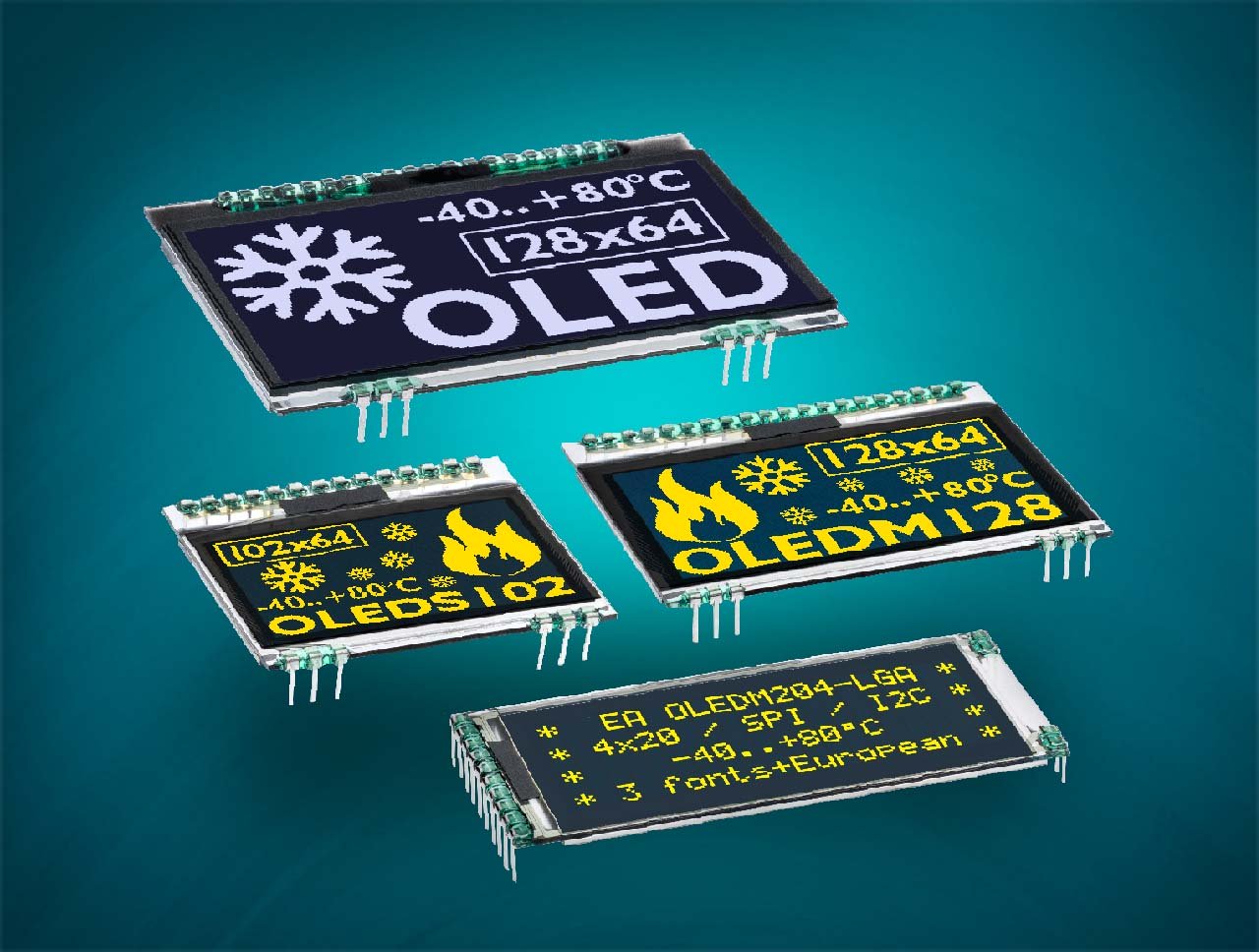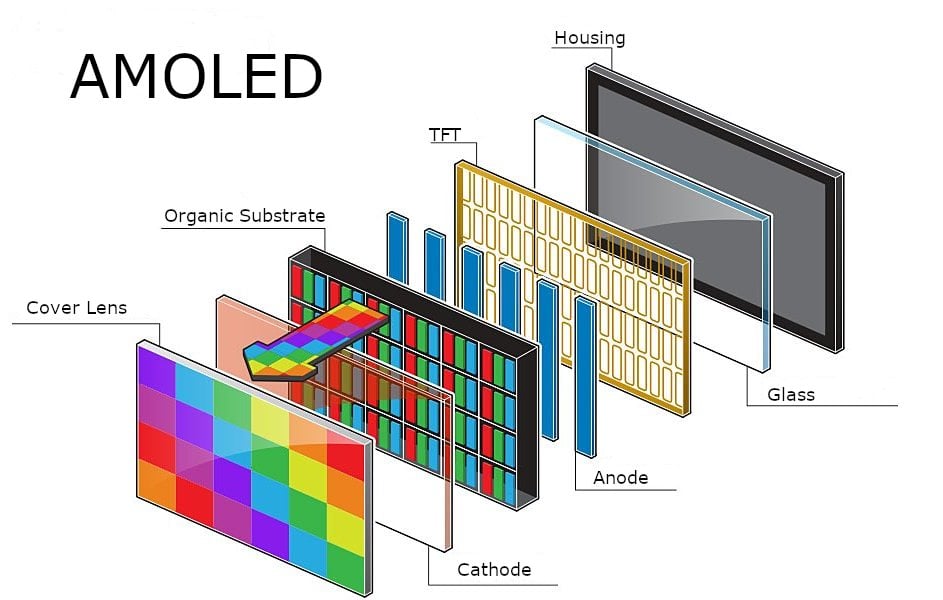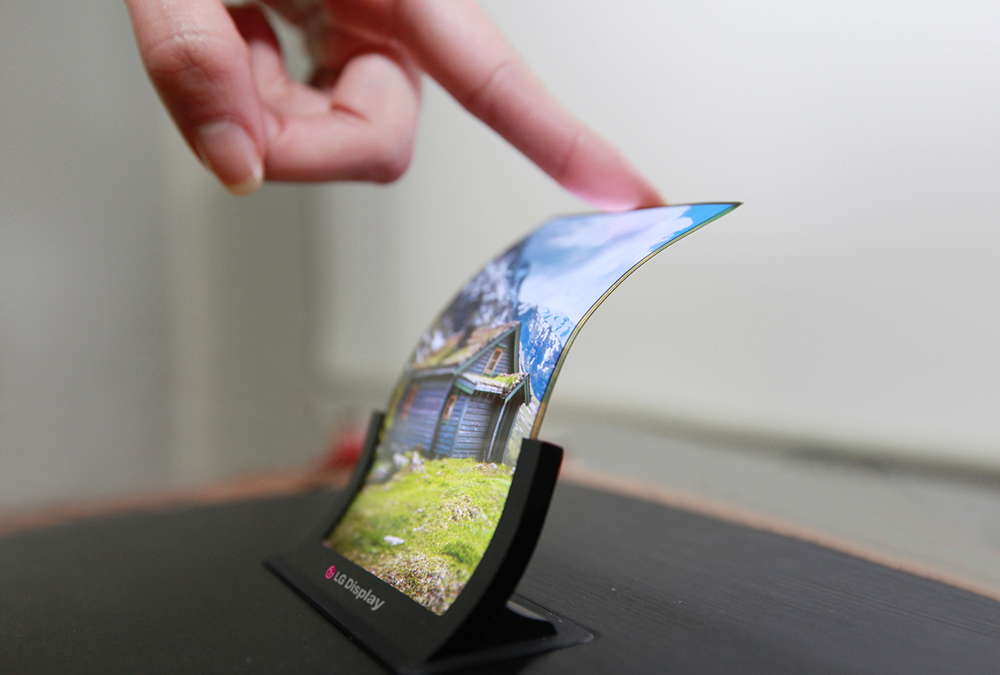Smartphone has become a basic necessity of our life and has become or mini-computer that is with us all the time. Now it performs multiple functions in just a tap of fingers. With the growing technology reforms, we come across new features in term of design in any smartphone. AMOLED, OLED, and POLED displays are commonly in talks nowadays. These are the three basic LED display technologies that are available today and many people are curious to know the difference between them.
AMOLED vs OLED vs POLED- Which one is better
So keeping in view the demand, PhoneWorld has decided to introduce our readers to the OLED, AMOLED, and POLED (AMOLED vs OLED vs POLED) display technologies. We will discuss the properties of both display technologies followed by the difference between them.
OLED Displays:
The word OLED stands for Organic Light Emitting Diode. Basically, the OLED Displays have an LED which is made up of an organic material that emits light when current is passed through it. OLED displays are widely used to display vibrant colors. This type of display is smaller, flexible and comparatively thin as compared to the old LED technology. While transmitting dark colors, these displays consume less power.
Advantages of OLED Display:
As discussed above the organic layers of OLED displays are much thinner, lighter and more flexible. OLEDs are lighter due to the light emitting layers, also they are flexible instead of rigid. OLEDs do not need backlighting like LCDs OLEDs are much brighter, unlike LEDs. OLEDs display can be easily produced They can be made to larger sizes. OLEDs have large fields of view i.e. around 170 degrees.
Disadvantages of OLED Displays:
Though OLEDs are widely used displays but they also have some disadvantages:
Life of OLED display is shorter than LCD and LED display technology. The OLEDs have variation in colour balance. OLEDs are not water resistant so they easily get damaged with water.
Fields Where OLED Displays are used:
The OLEDs are widely used in different areas:
OLED displays are used in television display creation Used in smartphone screen development Used in computer monitor screen implementation. It is also used for creating flexible and bendable lighting, wallpaper and even for transparent lighting.
AMOLED Displays:
AMOLED stands for Active Matrix Organic Light Emitting Diode. THis type of display is based on active matrix system and has thin film transistor (TFT) to control the flow of current in each pixel. It has two thin film transmitter with different workings. One is used to start and stop charging of the storage capacitors and other to facilitate the charging of the capacitors. When it comes to the size of the display, AMOLED has no limitations and its power consumption is lesser than OLED and LED displays. It is the latest technology available in town and is actively pursued by many device makers due to its incredible performance. It is thinner, lighter and flexible than any other display technology like LED, LCD technology.
Areas where AMOLED displays are used:
Mobiles Laptops TVs Smart watches Tablets Portable music players Games consoles Music production hardware Digital cameras
Advantages of AMOLED:
There are many advantages of AMOLED Displays due to which it is gaining popularity. Some of them are as follows:
AMOLED can be easily embedded into a display of any size. It has a much faster refresh rate as compared to PMOLED. It is widely used in all industries. They offer much better viewing angles as compared to the IPS LCD.
Disadvantages of AMOLED:
However, everything has certain limitations. Some disadvantages of AMOLED displays are as follows:
One of the biggest disadvantage od AMOLED display is that its quality degrades with time. The AMOLED display is very prone to screen burn-in. The AMOLED displays are extremely costly as compared to other display technologies.
Basic Difference between OLED and AMOLED displays:
This table will easily explain the main and basic difference between the two technologies: Differences between AMOLED vs OLED Display Technology
- Technology – AMOLED vs OLED In OLED, when a current flows through a tiny layer of organic material, light is emitted. Each pixel emits its own light in this technology. AMOLED, on the other hand, adds another layer of thin-film transistors to the mix (TFTs). Storage capacitors are used to keep the pixel states stable.
- Display – AMOLED vs OLED In comparison to OLED displays, AMOLED screens are far more adaptable. As a result, they have a comparatively good display and are a lot more expensive than OLED displays.
- Contrast Ratio – Amoled vs. OLED Pixel control is quite good on an OLED display. As a result, it can be totally turned off, resulting in a superior contrast ratio and lower power usage as compared to AMOLED displays. AMOLEDs, on the other hand, updates at a faster rate than OLEDs. In addition, because each pixel transmits light, they have a far higher artificial contrast ratio than OLEDs.
What is a POLED & how does it work?
POLED stands for Plastic Light Emitting Diode. It is a kind of display technology that utilizes a flexible plastic substrate such as polyethylene terephthalate (PET) rather than a glass for the electroluminescent organic semiconductor to be instilled in it. The use of more malleable plastic rather than glass enables the display panel to be bent and folded without breaking up. Difference between OLED and POLED: Both of these displays are built on the basis of the same technology but there are some differences. In an OLED display, the actual light-emitting diodes (LEDs) are squeezed between two sets of substrates, with a polarizer on top of it. The main difference between the POLED and OLED panel is that the former uses a polyethylene (plastic) substrate rather than the glass, thus enabling manufacturers to make flexible displays that can be rolled up similar to paper. The use of plastic also enables these panels to be slimmer and less pricey to manufacture as compared to the standard OLED displays. Expected Applications of the POLED display: There can be a number of applications of plastic OLEDs. They can be used in the manufacturing of rollable or bendable displays that would be used in a number of foldable smartphones and other personal gadgets in the near future. Furthermore, they can also be used in futuristic epapers. Another possible application for POLED is smart clothing. Therefore, if everything goes as per the plan, initiatives such as Google’s Project Jacquard may also utilize this technology in the future. In addition to that, the automobile industry may also use the POLED displays in their dashboards and in-car infotainment systems. Advantages of a POLED panel:
The POLED panel is more durable than the glass panel. POLED panels are much more shockproof than the standard OLED panels as the former is much flexible. POLED panels are also cheaper and sleeker than glass panels which implies that the manufacturers will be able to make thinner smartphones and tablets by utilizing these panels. POLED will also enable smartphone manufacturers to make displays with smaller bezels, though, how that works remains to be seen.
Disadvantages of a POLED panel:
OLED panel has a better display quality as compared to the POLED panel as the glass has much better optical properties as compared to the plastic and is more clearer as well. The plastic used in the POLED panels can also be scratched more easily as compared to the glass.
Can we consider POLED as the future of display technology? Whether POLED displays will revolutionize the display technology or not, it’s yet to be seen. At least, they will provide manufacturers and consumers with an alternative option, which is a great thing. The enhanced durability, impeccable sleekness, and the ability to mold POLED displays into unique shapes and forms will surely make it a significant addition to the display industry.
Conclusion- OLED VS AMOLED VS POLED:
The smartphone displays have evolved more than one realizes in this technological era. Display screens are like the windows to the mobile world which has witnessed a dramatic evolution in terms of innovation and technology. Just in a few years, People have become more choosy while selecting a phone in terms of all the features but the display always stands out. All smartphone giants are trying to provide their users with the best devices incorporating the latest technologies. AMOLED is essentially a type of OLED and a better version of OLED and POLED, so there is no question there as to which one is better. Also, check out?
Super-AMOLED vs IPS LCD? Which is Better and Why? OLED vs LCD (IPS) – Which is better and Why? AMOLED vs LCD: What is the difference? 11 Different Types of Mobile Phone Displays in the Market


